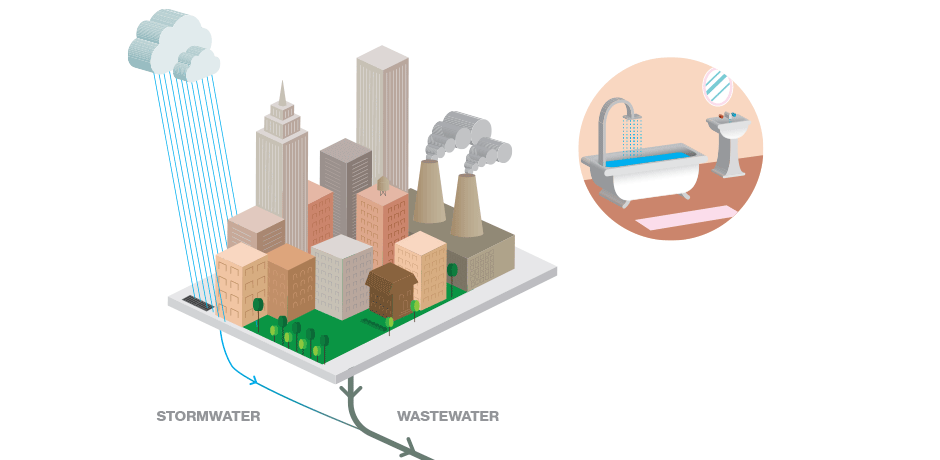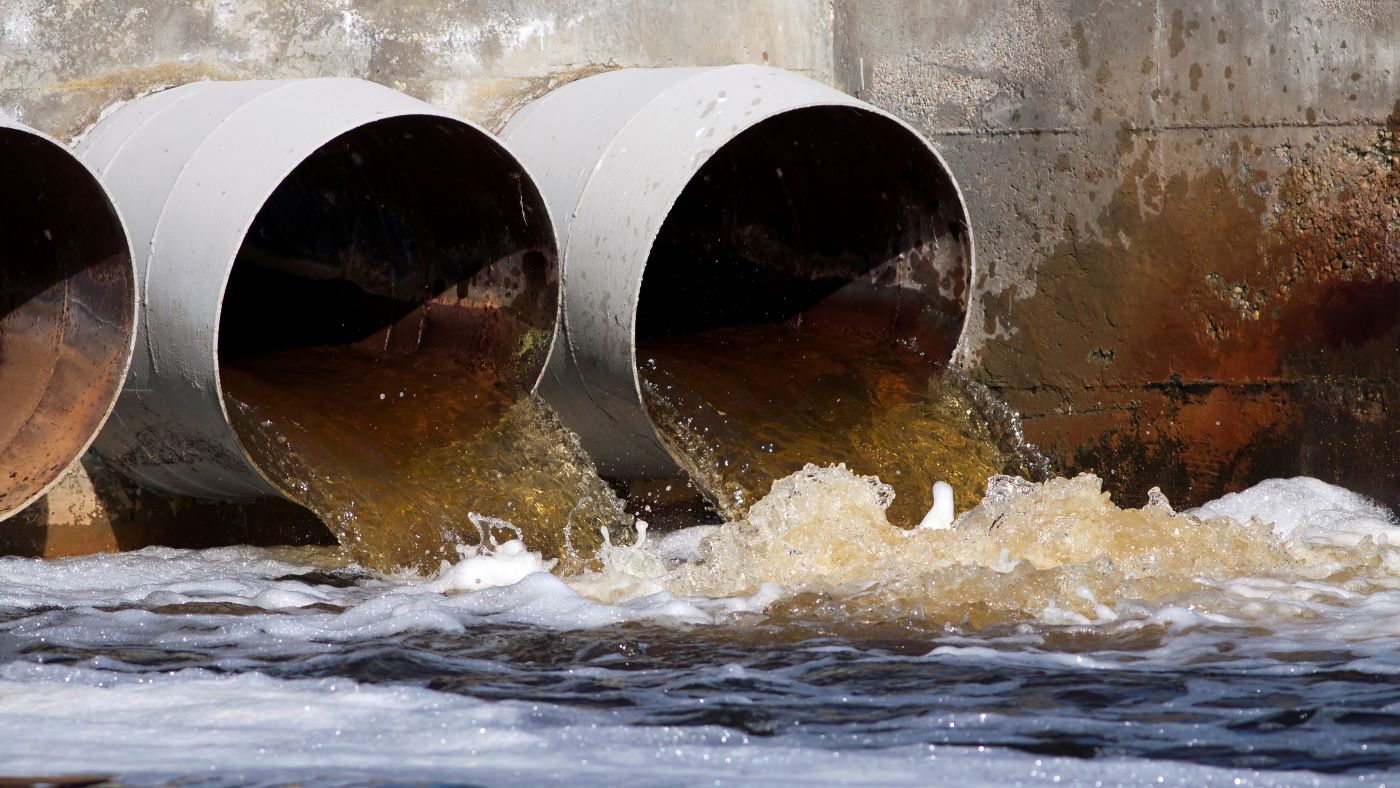Optimizing Waste Water Therapy Procedures: Methods for Improved Water Quality and Resource Recuperation
In the realm of wastewater therapy, the pursuit for enhancing effectiveness and sustainability with procedure optimization is a continuous quest that holds tremendous significance. From cutting-edge technologies to ingenious resource healing methods, the landscape of wastewater therapy is advancing swiftly.
Relevance of Refine Optimization
Enhancing drainage treatment procedures via meticulous procedure optimization is vital for making the most of performance and making sure ecological sustainability. By fine-tuning each action of the therapy procedure, from first intake to last discharge, water treatment centers can achieve greater levels of contaminant elimination, decrease energy intake, and decrease the generation of waste spin-offs. Process optimization includes analyzing vital performance signs, such as hydraulic retention times, sludge retention times, and nutrient degrees, to recognize areas for improvement and execute targeted services.
Efficient process optimization not only boosts the general performance of drainage therapy plants but additionally adds to set you back financial savings and regulatory conformity. By maximizing processes, operators can achieve greater treatment capacities without the demand for significant framework financial investments. Furthermore, enhanced therapy effectiveness leads to cleaner effluent discharge, lowering the environmental effect on getting water bodies and environments.

Advanced Treatment Technologies
In the world of waste water therapy, the application of advanced treatment modern technologies plays a critical duty in enhancing the general efficiency and performance of the treatment procedures. These advanced innovations offer ingenious remedies to address complicated contaminants present in wastewater streams, making certain the removal of contaminants to satisfy rigorous water quality requirements. Advanced therapy processes such as membrane layer bioreactors, ozonation, progressed oxidation procedures, and turn around osmosis enable the detailed removal of contaminants, including emerging contaminants like drugs and individual treatment items.
Moreover, these innovations assist in source healing by removing valuable materials such as phosphorus, nitrogen, and energy from the wastewater. For example, progressed nutrient elimination modern technologies can recoup phosphorus and nitrogen for reuse in farming fertilizers, while energy healing systems like anaerobic digestion can harness biogas for electrical energy generation. By incorporating advanced treatment technologies into wastewater treatment plants, operators can boost water quality, decrease ecological influence, and relocate towards a more lasting and resource-efficient approach to wastewater monitoring.
Source Healing Methods
Source recuperation methods in wastewater treatment procedures play a critical duty in maximizing the application of important sources included within wastewater streams. These techniques goal to essence and reuse products such as nutrients, power, and water from the wastewater, transforming what was when thought about waste right into useful resources. One usual resource recuperation method is the extraction of nutrients like phosphorus and nitrogen from wastewater for reuse as plant foods or in industrial procedures. Additionally, power healing approaches such as anaerobic digestion and biogas manufacturing help harness the power capacity of natural matter in wastewater to create power or heat.
Water healing strategies, such as membrane layer innovations and progressed filtration systems, enable the therapy and reuse of water for non-potable applications like irrigation or commercial processes. By implementing resource recuperation methods in wastewater therapy plants, not just can useful sources be conserved and reused, but the general sustainability and performance of the therapy procedure can be significantly boosted. As the emphasis on source deficiency and ecological sustainability proceeds to grow, the relevance of integrating resource healing methods right into wastewater therapy procedures comes to be significantly noticeable.
Sustainable Practices in Wastewater Treatment
Lasting techniques in wastewater therapy include an array of strategies intended at decreasing the environmental impact of treatment procedures while taking full advantage of resource recovery. One key aspect of sustainable wastewater treatment is the application of energy-efficient technologies to decrease the carbon impact of therapy plants.
Furthermore, the adoption of innovative therapy modern technologies that promote water reuse and recycling plays an look at this site important function in sustainable wastewater monitoring. By treating wastewater to a high requirement, it can be repurposed for numerous non-potable applications, such as irrigation, industrial processes, and even drinkable water production in many cases. This not only saves important freshwater resources however additionally minimizes the volume of effluent discharged right into the environment.

Study on Effective Optimization
As wastewater therapy facilities significantly concentrate on sustainable methods, real-world situation research studies showcasing effective optimization techniques work as vital models for sector innovation. One such study focuses on the application of sophisticated nutrient elimination technologies in a community wastewater treatment plant. By integrating biological nutrient elimination procedures and optimizing functional criteria, the facility achieved considerable decreases in nitrogen and phosphorus degrees discharged right into getting waters, inevitably enhancing total water high quality.
An additional remarkable study involves the combination of anaerobic food digestion systems in an industrial wastewater treatment plant to boost energy recuperation and source performance (Waste Water Treatment). Through the digestion of official statement organic waste products, the facility not just produced biogas for energy manufacturing yet also minimized the volume of sludge calling for disposal. This double benefit not just boosted the plant's sustainability performance but likewise caused price savings
These effective optimization approaches show the possibility for wastewater treatment centers to achieve both financial and environmental advantages through cutting-edge strategies and efficient processes. By discovering from these study, sector professionals can additionally enhance their very own procedures to boost water high quality and source recovery.
Final Thought
In final thought, maximizing waste water therapy processes with advanced innovations, source recovery strategies, and lasting methods is critical for enhancing water quality and taking full advantage of source recuperation. Waste Water Treatment. Instance studies have actually shown successful application of optimization methods in different wastewater therapy centers. By remaining to prioritize procedure optimization, we can ensure reliable and reliable therapy of wastewater, eventually resulting in a much more sustainable and environmentally friendly approach to managing water sources
By fine-tuning each action of the therapy process, from preliminary intake to final discharge, water therapy facilities can attain greater levels of contaminant removal, reduce power consumption, and reduce check out this site the generation of waste byproducts.In the world of waste water treatment, the application of innovative therapy technologies plays an essential function in boosting the total performance and effectiveness of the therapy processes. By including sophisticated therapy modern technologies right into wastewater treatment plants, drivers can enhance water quality, lower ecological effect, and move towards an extra resource-efficient and sustainable strategy to wastewater management.
By applying resource recuperation methods in wastewater therapy plants, not just can useful sources be conserved and recycled, but the total sustainability and efficiency of the treatment process can be considerably enhanced. Sustainable techniques in wastewater therapy incorporate a range of methods aimed at decreasing the environmental impact of treatment procedures while making best use of resource recuperation.